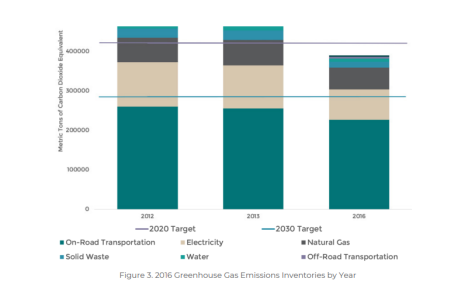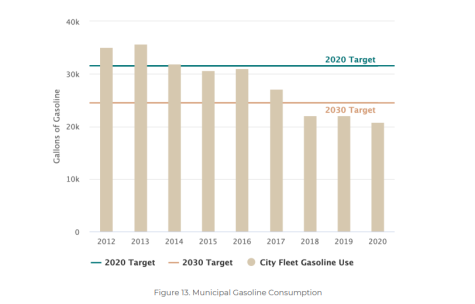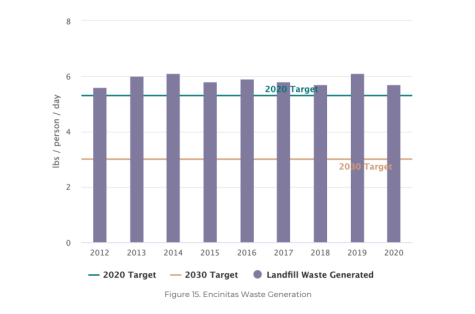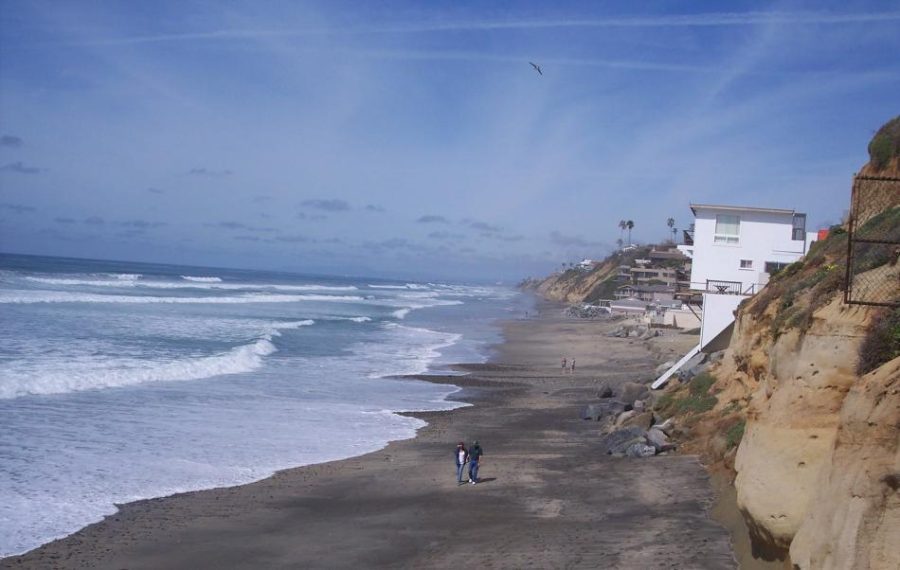Photo Courtesy of encinitasenvironment.org
An Encinitas beach
Encinitas Climate Action Plan
New guidelines to combat climate change
April 25, 2022
In coming years, the effects of climate change will be increasingly felt by the city of Encinitas, in the forms of rising sea levels, further drought risk, and more vulnerability of bluffs and beaches. The city intends to do what it can to curb these effects through a number of different climate related projects, named in the recently published 2020 Climate Action Plan (CAP).
The 2020 CAP was released during early April of this year to detail projects and progress that the city has made in combating climate change. The intent of the CAP is to outline the climate related goals of the city and to show what it has done to meet its goals in the past as well as its plans for the future, all in its efforts to benefit the current Encinitas as well as the Encinitas of the future.
As a result of Covid-19, city projects which were not related to the public health of the community were temporarily put to the side, as health safety had become a top priority. Nonetheless, considerable progress has been achieved in meeting the CAP’s goals.
Originally, the CAP aimed to reach greenhouse gas (GHG) emission levels of 13% less than those in 2012 by the past year of 2020, and 44% less than 2012 by 2030. However, according to an emissions inventory conducted with the San Diego Association of Governments, 2016 GHG emission levels were 15% lower than in 2012, ahead of the the 2020 goal. In addition, the city expects “more significant reductions than what was seen in the time period between 2013-2016” now that it has implemented more and more CAP actions and measures. The next emissions inventory is expected to be conducted sometime this year.

One of the larger problems facing Encinitas is water efficiency. According to the CAP, Encinitas residents tend to use more water than the average American, which the city credits to California’s dry climate and the need for more landscape irrigation. As it is, 50% of water being used in San Diego County is purposed for outdoor irrigation. The CAP’s solution to this problem is to “[encourage] the community to conserve water in their homes and businesses,” which, according to the CAP, has been working very well. In 2020, a particularly dry year for the region, the average water usage was 14% less than that of 2012. However, projected drought conditions and the changing climate will call for an even more drastic decreases in our everyday water use.
The city is also working to support clean and efficient transportation, such as biking and walking, as well as reducing the number of vehicle miles traveled. It is estimated that the city would reduce emissions of carbon dioxide equivalent by 254 metric tons upon completion of its proposed bicycle and pedestrian projects. In 2020 alone, the city installed 10.4 miles of bike lanes, equating to 15.5 miles of bike lanes since 2012. The city also installed 0.9 miles of pedestrian facilities throughout the course of 2020, meaning 19.1 miles in total of pedestrian facilities have been installed since 2012. Pedestrian facilities include sidewalks, walkways, and crosswalks.
Additionally, the city is also focused on public transport as a means of reducing emissions. The city aims to implement a local shuttle system, though that project is still awaiting resource allocation. Adding more local transit options could have saved roughly 365,000 vehicle miles traveled in 2020, and could save approximately 875,000 vehicle miles traveled in 2030, according to the CAP. New transit routes would “serve the highway 101 corridor, education facilities…, and the Encinitas Coaster station,” which could mean that buses to SDA are a possibility in the future. The CAP says that “opportunit[ies] for outside funding is currently being explored and costs for a local shuttle system will be considered in a future city budget”.

Another focus of the city is building efficiency, which can be achieved by increasing the energy efficiency of new commercial and residential buildings. With plans to continue developing, it was necessary to revise the standards and measures for building efficiency. This spring, the city’s new green building ordinance, which calls for “higher energy efficiency standards for residential and commercial buildings”, “installation of solar photovoltaic systems on commercial buildings”, and the “decarbonization of all new buildings”, will take effect, after approval from the California Energy Commission. By setting higher energy efficiency standards for residential and commercial buildings, the CAP achieved its 2030 energy reduction goal in 2015 (a reduction of 675 metric tons of carbon dioxide equivalents), and has been maintaining it since, as can be seen from the graph below.
In 2019, the City established a Community Choice Energy (CCE) Joint Powers Authority that includes the cities of San Diego, Chula Vista, La Mesa, and Imperial Beach. The new agency, San Diego Community Power, aims to provide 100% renewable energy by 2030. As of April 1, 2022, the CCE expanded to serve residential customers, on top of the already serviced municipal and commercial installations.
Additional efforts have gone towards furthering the local zero waste program. The program reduces the amount of waste sent to landfills as well as the amount of methane that is released into the air. Methane is released as waste, especially organic waste, decomposes. The city will expand recycling and composting programs, although full effectiveness is contingent on the participation of Encinitas residents.

According to the United States Geological Survey, California could lose nearly half of its beaches by 2100. In 2019, Encinitas completed its living sand dune project to combat this. Living sand dunes are an innovative example of green infrastructure that will help to prevent the damage of rising sea levels. The living sand dunes will last for roughly 20-30 years, until they are taken over by the rising tides. They cost the city roughly 2.5 million dollars, but overall they will be cheaper than paying yearly for temporary, regular sand dunes to be installed.
This is what the city is doing against climate change, but the greater community also has it’s role to play. Being sure to recycle and compost are both important and simple every day ways to help, as well as doing one’s best to conserve water, being mindful of consumption of goods and products, and biking or walking instead of driving, whenever possible.


